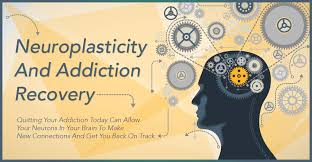NewDay Counseling
If you have a problem with alcohol or some other drug, call a NewDay counselor at 912.201.3605 * 401 Mall Blvd, Ste 101 D, Savannah, Ga * Free Phone Consultations
Neuroplasticity and Addiction Treatment: Part One
 I firmly believe that the relationship discovered going forward between neuroplasticity and addiction treatment will greatly improve recovery outcomes. With addiction, although it might seem strange to someone who doesn’t understand addiction, the particular drug used is not so important as what happens to the brain when an addictive drug is taken by someone with a predisposition to addiction. The particular drug of choice will be important to the person in recovery because of environmental, social and emotional triggers that remind the recovering addict of a place, a smell, a friend or a feeling associated with their main drug of choice – understanding these triggers is vital to relapse prevention, but, otherwise, the brain reacts pretty much the same, in relation to addiction, to all addictive drugs. The neuro-chemical actions in the brain are different from one drug to another – however, the neural-pathways created by repetitive drug use are what make recovery so difficult. Because this is not a simple subject, I’ll write this in several parts.
I firmly believe that the relationship discovered going forward between neuroplasticity and addiction treatment will greatly improve recovery outcomes. With addiction, although it might seem strange to someone who doesn’t understand addiction, the particular drug used is not so important as what happens to the brain when an addictive drug is taken by someone with a predisposition to addiction. The particular drug of choice will be important to the person in recovery because of environmental, social and emotional triggers that remind the recovering addict of a place, a smell, a friend or a feeling associated with their main drug of choice – understanding these triggers is vital to relapse prevention, but, otherwise, the brain reacts pretty much the same, in relation to addiction, to all addictive drugs. The neuro-chemical actions in the brain are different from one drug to another – however, the neural-pathways created by repetitive drug use are what make recovery so difficult. Because this is not a simple subject, I’ll write this in several parts.
Let’s start from when neural pathways are strengthened and make drugs seem necessary and good to the addict. The addict consumes a drug, dopamine flows, the midbrain remembers the quick sense of euphoria or well-being, and neural pathways are strengthened, repeat and repeat and so on. In most people who’re social drinkers, their brains never change to the point that craving a drug overwhelms reason and judgment. For the addict, brain chemicals make changes that create tolerance and the irrational craving for more and more of the drug. This vicious cycle continues until there’s treatment and a reversal of the process.
People on the outside who witness an addict go into treatment and come out with the drug completely out of his/her system are mystified when the person returns to the drug shortly after treatment. It’s usually because he/she stops doing anything further to promote recovery. After years of strengthening neural pathways that tell the brain a drug is good and necessary, these pathways are too strong to overcome with just a few weeks of treatment. In treatment an addict should learn that recovery is a long-term process. It takes a while to strengthen the neural pathways that tell the brain the drug is deadly, and that recovery is healthy and life enhancing.
If you’ve ever had to change your ideas about something that’s deeply ingrained in your brain, that you’ve reinforced for years, like eating fried food, or a long-term love relationship that you discover, after decades, has gone terribly awry, you understand how hard it is to change the brain to see something you enjoyed immensely, loved or craved as harmful and something that you must resist. Now, take that understanding and multiply it and you’ll get an inkling of an understanding how hard it is to stay away from a drug that captured the body and mind for years. For years the addict could take the drug and, quickly, the strong feeling of euphoria or well-being was there on demand — the addict’s brain stored the powerful memory of immediate satisfaction deep in the midbrain and associated this memory with people, places and things that trigger the desire to use the drug — now the drug has turned on the person, but the brain still wants the relief, quickly, with power and consistency. It takes awhile to change this in the brain. The good news is that the brain can change and recovery is possible.
In the next few days, I’ll write more in detail about neuroplasticity and addiction treatment how the brain changes in recovery according to those doing research in this area.
 Notification- TRANSACTION 1,478011 BTC. Get =>> https://graph.org/Message--120154-03-25?hs=992f762c66bb1f5666acf417547d7a0c&
Notification- TRANSACTION 1,478011 BTC. Get =>> https://graph.org/Message--120154-03-25?hs=992f762c66bb1f5666acf417547d7a0c&
Pingback: Neuroplasticity and Addiction: Part Two - NewDay Counseling - Addiction Treatment